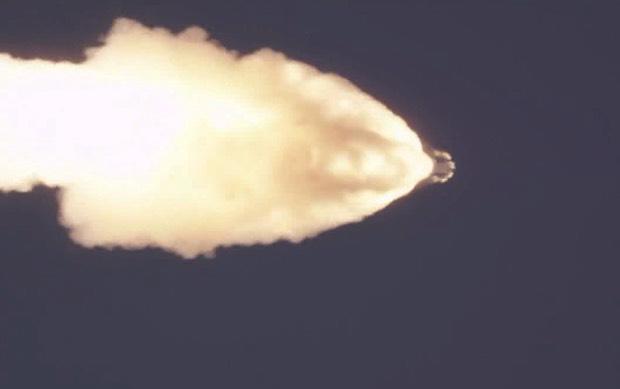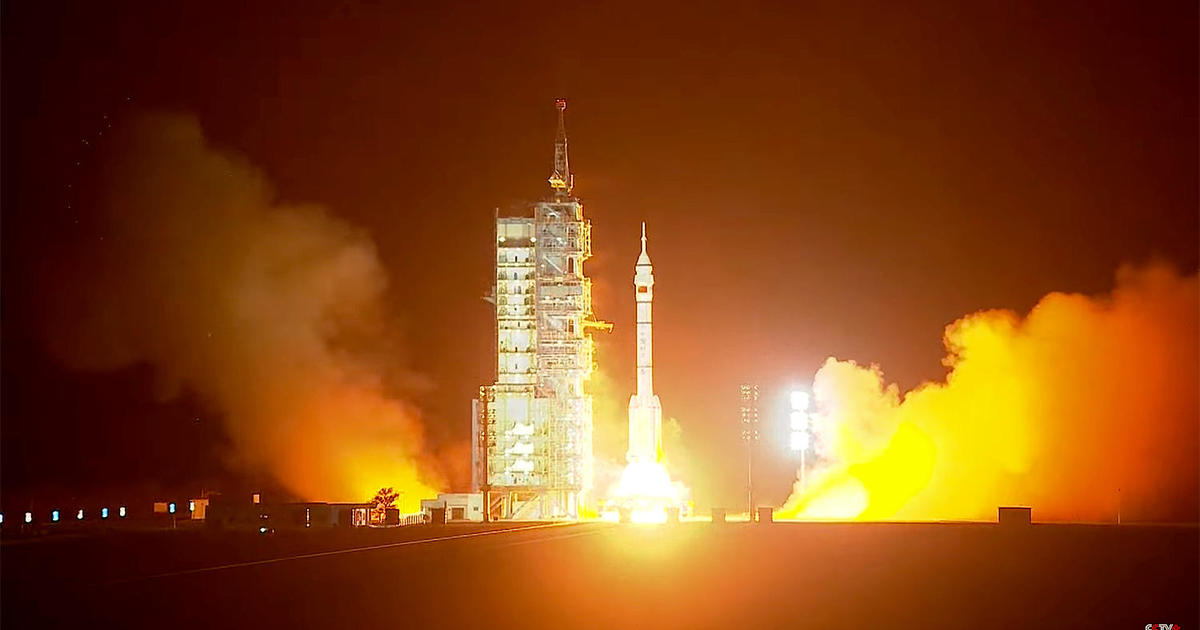NASA launches Orion capsule to test abort system for moon-bound ship
In a key test for the Artemis moon program, NASA launched a dummy Orion capsule Tuesday and then triggered the abort system designed to carry a crew to safety in the event of a catastrophic booster failure. The spectacular $256 million test appeared to go off without a hitch as the launch abort system, or LAS, pulled a 22,000-pound mockup of an Orion moonship safely away from its still-firing booster, showing it will work as advertised during the most aerodynamically stressful periods of flight.
To save time and money, the dummy capsule was not equipped with its own thrusters or parachutes and it plunged into the Atlantic Ocean about 7.5 miles east of Cape Canaveral after the test, hitting the water at some 300 mph. Data from some 890 sensors already had been radioed to the ground and stored on 12 ejectable recorders as a backup.
"Everything looked really good," said Mark Kirasich, NASA's Orion program manager. "The abort motor fired, the attitude control motor, the pressures were fine ... by all first accounts it was a perfect test."
The flight began at 7 a.m. EDT when the first stage motor from a decommissioned Peacekeeper ICBM, standing in for NASA's gargantuan Space Launch System rocket, roared to life and shot away from pad 46 at the Cape Canaveral Air Force Station.
Fifty-five seconds later, at an altitude of about 31,000 feet and traveling at more than 1,000 mph, the solid fuel-powered launch abort system, or LAS, ignited on computer command, spewing four jets of fiery exhaust and generating 400,000 pounds of thrust.
At that same instant, explosive bolts fired to free the LAS and the dummy Orion capsule from the still-firing booster.
The test was designed to verify the abort system would work as required in a worst-case scenario, when an SLS booster will be subjected to the most extreme aerodynamic forces during an actual climb to space. That point, known as "max Q," occurs around the same time a rocket exceeds the speed of sound in the thick lower atmosphere.
NASA and its contractors are in the process of building the first SLS booster and the Orion capsules needed for its first three missions as part of the newly named Artemis moon program.
The Trump administration has directed NASA to land astronauts on the moon in 2024, four years earlier than originally planned. An unpiloted test flight of the SLS booster and Orion capsule is planned for late next year or early 2021 followed by a piloted flight of an Orion capsule carrying astronauts around the moon in the 2022 timeframe.
The third flight of an SLS will carry two astronauts to the surface of the moon in 2024. But before any of the piloted missions can fly, engineers must verify the performance of the launch abort system developed by Orion-builder Lockheed Martin.
The LAS stretches more than 50 feet from the top of the Northrop Grumman booster to the tip of the escape motor. An aerodynamic shroud surrounds and protects the Orion capsule from aerodynamic stress.
During Tuesday's test, the escape motor instantly pulled the Orion mockup away from the still-firing booster, reaching a predicted altitude of about 43,000 feet in 15 seconds. At the same time, a smaller solid-propellant motor, using eight small nozzles at the tip of the LAS, fired to control the vehicle's orientation.
After the primary abort motor burned out, the attitude control system, responding to guidance commands, flipped the Orion around into a tail-first orientation for the fall back toward Earth.
About 27 seconds after the abort was triggered, a third motor fired to pull the escape system and shroud away from the Orion capsule at a maximum altitude of about 44,000 feet. From there, the now-exposed capsule fell to impact in the Atlantic Ocean.
In an actual abort, the capsule would maintain stability with its own attitude control system thrusters and deploy huge parachutes before a relatively gentle splashdown.
But in a bid to keep costs down and carry out the abort test as soon as possible, NASA managers opted to use a dummy capsule without any parachutes or control systems, all of which have been tested separately. The savings amounted to about $30 million.
Data collected by 890 temperature, pressure, acoustic and other sensors was radioed back to Earth in real time. As a backup, 12 small recorders, each one carrying a complete set of sensor data, were to be ejected two at a time during the plunge back to Earth. Equipped with radio beacons, the recorders are designed to float on the surface while waiting for recovery.
The launch abort system is designed to pull an Orion capsule and its crew to safety from the launch pad through all phases of powered flight. An initial on-pad launch abort test was successfully carried out in 2010. Tuesday's flight was the final planned test of the system using the same hardware that will be used on the first piloted SLS flight.
"It's certainly a very exciting test for us," said veteran astronaut Randy Bresnik. "It's the only one of its type in the dynamic flight environment, the environment where it's going to be needed the most. ... The neat part is, the next time this full launch abort system flies there will be crew underneath it in Artemis 2."







